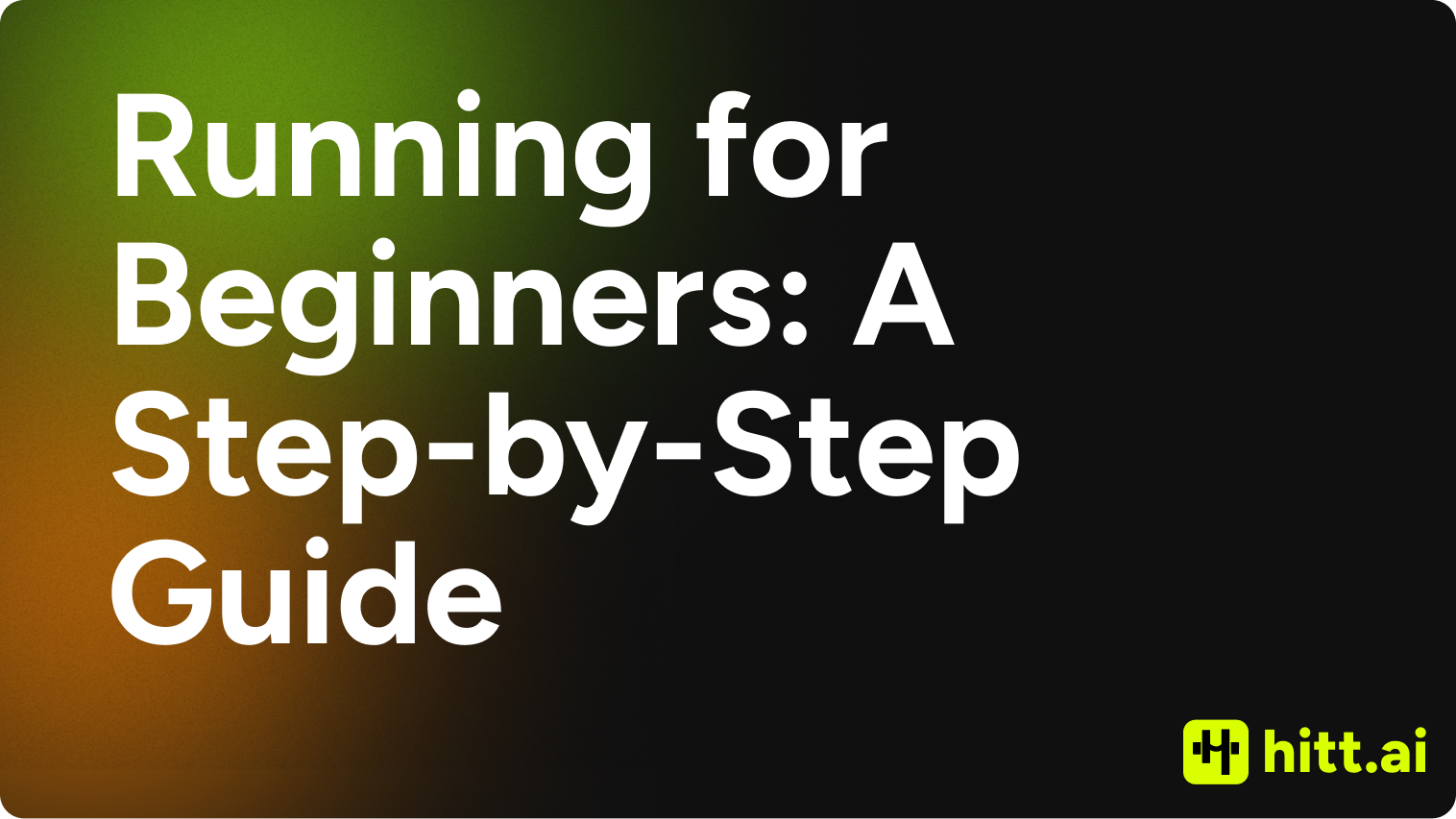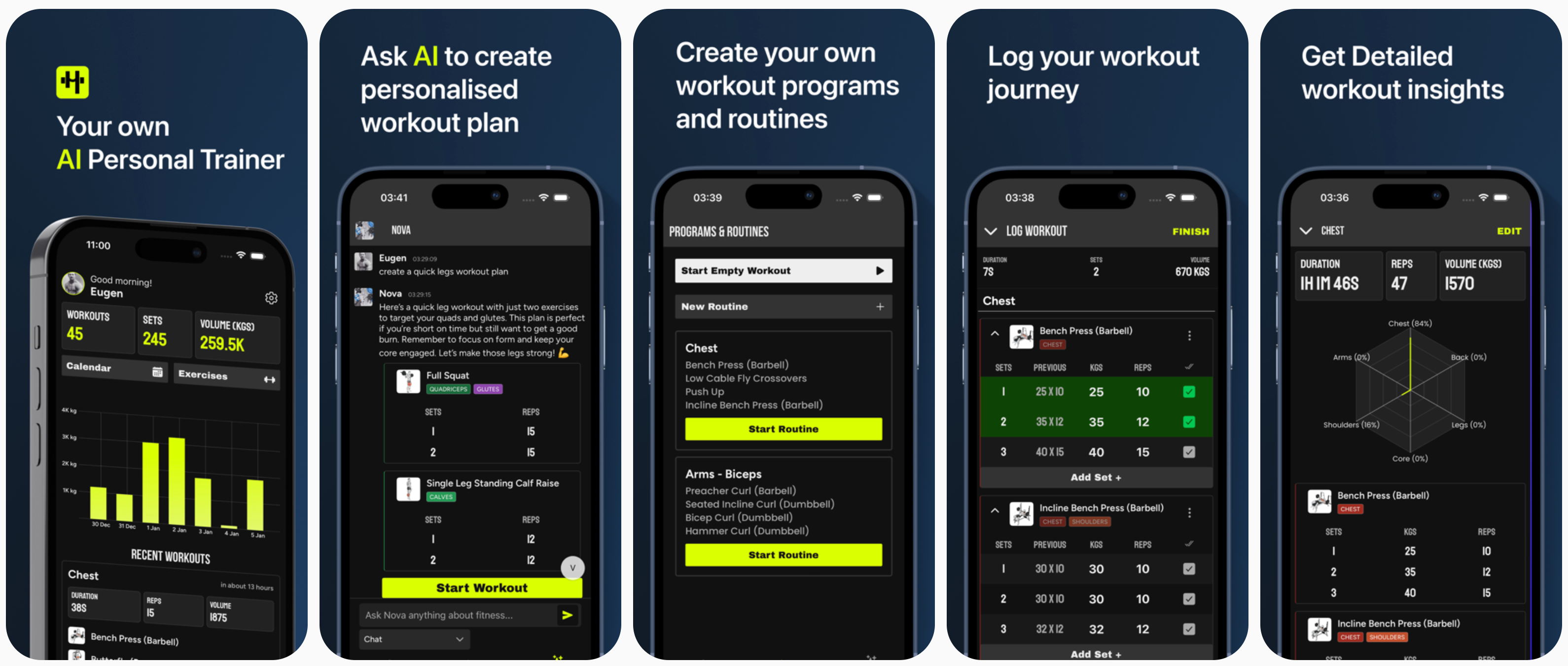
Running for Beginners: A Step-by-Step Guide
So, you're thinking about lacing up those sneakers and hitting the pavement? Awesome! Running is a fantastic way to improve your fitness, boost your mood, and explore the great outdoors. But let's be real, starting can be intimidating. That's why we've created the ultimate step-by-step guide to running for beginners. No matter your current fitness level, we'll help you get started on the right foot (pun intended!).
Why Running Matters (More Than Just Burning Calories)
You might be thinking, "I just want to lose weight." But running is about more than just shedding pounds. It's about improving your cardiovascular health, reducing stress, and feeling like a total rockstar as you conquer those miles.
Here’s why running is a game-changer for your fitness journey:
- Improved Cardiovascular Health: Running strengthens your heart and lungs, reducing your risk of heart disease.
- Stress Reduction: Running releases endorphins, which have mood-boosting effects.
- Weight Loss: Running burns calories and helps you lose weight.
- Increased Energy: Running improves your energy levels and reduces fatigue.
- Better Sleep: Running can help you fall asleep faster and sleep more soundly.
Essential Tips for Running Beginners
Let's explore some essential tips to help you get started on your running journey.
1. Start Slow
What it is: Gradually increasing your mileage and intensity over time.
Why it matters: Starting too fast can lead to injuries and burnout.
Strategies:
- Walk-Run Intervals: Start with walk-run intervals and gradually increase the amount of time you spend running.
- Short Runs: Keep your runs short and sweet, especially in the beginning.
- Listen to Your Body: Pay attention to any pain or discomfort and adjust your training accordingly.
Pro Tip: Don't be afraid to walk! Walking is a great way to build endurance and prevent injuries.
2. Invest in Good Shoes
What it is: Choosing running shoes that fit well and provide adequate support.
Why it matters: The right shoes can help prevent injuries and make running more comfortable.
Strategies:
- Visit a Running Store: Get fitted for running shoes by a professional.
- Try On Different Shoes: Try on several different pairs of shoes to find the ones that feel best.
- Replace Your Shoes Regularly: Replace your running shoes every 300-500 miles.
Pro Tip: Don't skimp on shoes! Investing in a good pair of running shoes is worth it.
3. Warm Up Before You Run
What it is: Preparing your muscles and joints for exercise.
Why it matters: Warming up can help prevent injuries and improve performance.
Strategies:
- Dynamic Stretching: Perform dynamic stretches, such as leg swings and arm circles.
- Light Cardio: Start with a few minutes of light cardio, such as walking or jogging.
- Gradual Increase: Gradually increase your pace and intensity.
Pro Tip: Don't skip the warm-up! It's an essential part of your running routine.
4. Cool Down After You Run
What it is: Gradually decreasing your pace and intensity after exercise.
Why it matters: Cooling down can help prevent muscle soreness and improve recovery.
Strategies:
- Walk: Walk for a few minutes after your run.
- Static Stretching: Perform static stretches, holding each stretch for 30 seconds.
- Hydrate: Drink plenty of water to rehydrate your body.
Pro Tip: Don't skip the cool-down! It's just as important as the warm-up.
5. Listen to Your Body
What it is: Paying attention to any pain or discomfort and adjusting your training accordingly.
Why it matters: Listening to your body can help prevent injuries and burnout.
Strategies:
- Rest Days: Schedule rest days into your training routine.
- Cross-Training: Incorporate cross-training activities, such as swimming or cycling.
- Seek Medical Attention: Seek medical attention if you experience any persistent pain or discomfort.
Pro Tip: Don't push through pain! It's better to rest and recover than to risk injury.
Track Your Runs with hitt.ai

Maximize your running journey with hitt.ai. Our AI-powered tracking ensures you're running with proper form and optimal intensity for maximum results.
Why Use hitt.ai for Running:
- AI Form Analysis: Get real-time feedback on your running form.
- Personalized Training Plans: Tailor your training plans to your fitness level.
- Progress Tracking: Monitor your progress and stay motivated.
- Route Mapping: Discover new running routes in your area.
Sample Running Training Plans for Beginners
Let's put those tips into action with some sample training plans.
Week 1-4: Walk-Run Intervals
- Day 1: Walk 5 minutes, Run 1 minute, Walk 2 minutes, Repeat 5 times
- Day 2: Rest
- Day 3: Walk 5 minutes, Run 1 minute, Walk 2 minutes, Repeat 5 times
- Day 4: Rest
- Day 5: Walk 5 minutes, Run 1 minute, Walk 2 minutes, Repeat 5 times
- Day 6: Rest
- Day 7: Rest
Week 5-8: Increasing Run Time
- Day 1: Walk 5 minutes, Run 2 minutes, Walk 2 minutes, Repeat 5 times
- Day 2: Rest
- Day 3: Walk 5 minutes, Run 2 minutes, Walk 2 minutes, Repeat 5 times
- Day 4: Rest
- Day 5: Walk 5 minutes, Run 2 minutes, Walk 2 minutes, Repeat 5 times
- Day 6: Rest
- Day 7: Rest
Week 9-12: Building Endurance
- Day 1: Walk 5 minutes, Run 3 minutes, Walk 2 minutes, Repeat 5 times
- Day 2: Rest
- Day 3: Walk 5 minutes, Run 3 minutes, Walk 2 minutes, Repeat 5 times
- Day 4: Rest
- Day 5: Walk 5 minutes, Run 3 minutes, Walk 2 minutes, Repeat 5 times
- Day 6: Rest
- Day 7: Rest
Common Running Mistakes to Avoid
Let's talk about some common mistakes people make when starting to run and how to avoid them.
1. Starting Too Fast
- Solution: Start slow and gradually increase your mileage and intensity over time.
2. Wearing the Wrong Shoes
- Solution: Invest in good running shoes that fit well and provide adequate support.
3. Skipping Warm-Up and Cool-Down
- Solution: Always warm up before you run and cool down after you run.
4. Not Listening to Your Body
- Solution: Pay attention to any pain or discomfort and adjust your training accordingly.
5. Comparing Yourself to Others
- Solution: Focus on your own progress and don't compare yourself to others.
The Mental Game of Running
Running is not just about physical techniques; it's also about mental and emotional well-being. Here are some tips to help you stay mentally strong during your practice.
1. Set Realistic Goals
- Achievable: Set goals that are realistic and achievable.
- Progress: Focus on progress, not perfection.
- Patience: Results take time, so be patient and persistent.
2. Practice Self-Compassion
- Kindness: Treat yourself with kindness and understanding.
- Forgiveness: Forgive yourself for your mistakes.
- Acceptance: Accept your body as it is, flaws and all.
3. Cultivate Gratitude
- Appreciation: Appreciate the good things in your life.
- Positivity: Focus on the positive aspects of your experiences.
- Optimism: Maintain a positive outlook on the future.
4. Stay Present
- Focus: Focus on the present moment and avoid dwelling on the past or worrying about the future.
- Awareness: Be aware of your thoughts and feelings without judgment.
- Acceptance: Accept your experiences as they are, without resistance.
Conclusion
Running is a fantastic way to improve your fitness, boost your mood, and explore the great outdoors. By following these tips and training plans, you can get started on the right foot and enjoy a successful and enjoyable running journey.
Ready to lace up those sneakers and hit the pavement? Download hitt.ai and start tracking your runs today!